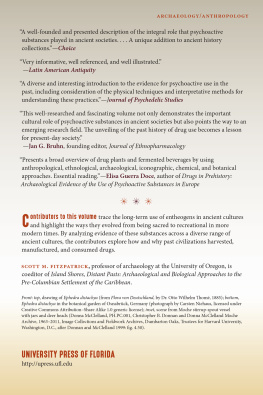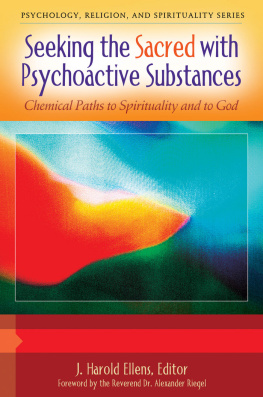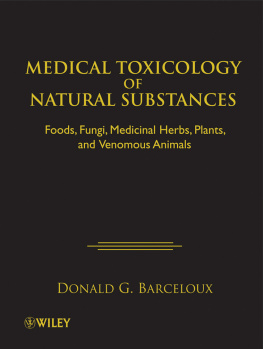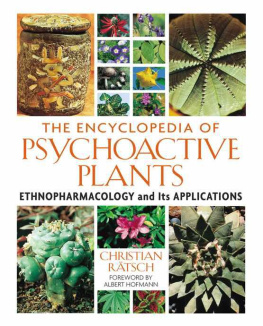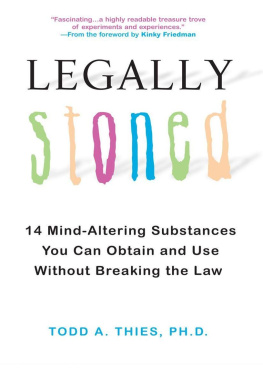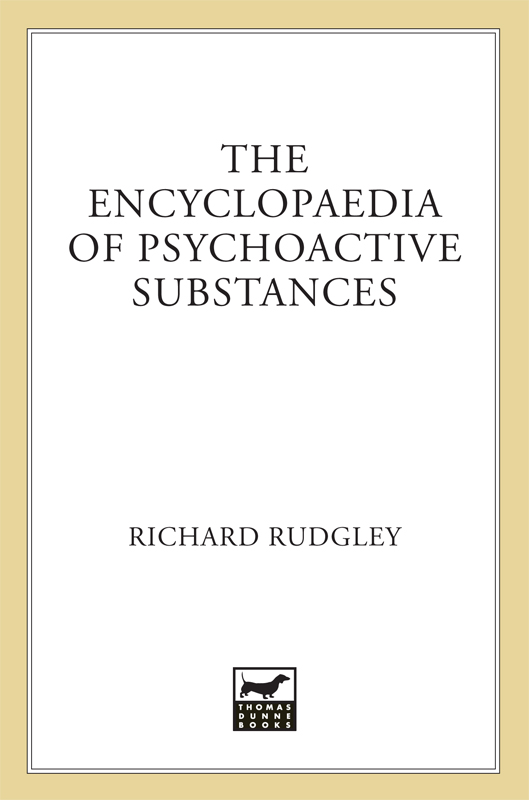Contents
Guide

The author and publisher have provided this e-book to you for your personal use only. You may not make this e-book publicly available in any way. Copyright infringement is against the law. If you believe the copy of this e-book you are reading infringes on the authors copyright, please notify the publisher at: us.macmillanusa.com/piracy.
Contents
To Andrew
I would like to thank all those who have helped in some way or another in bringing this book to fruition: in particular Dr Andrew Sherratt of the Ashmolean Museum, University of Oxford, for many fascinating (to me at least!) conversations on the Stone Age and later use of psychoactive plants. He has done much to convince me how deeply indebted the cultures of historical times are to their prehistoric forebears; my friend Michael Carmichael for introducing me to little understood aspects of the history of alchemy, particularly relating to psychoactive fauna, and for his constant enthusiasm and moral support; Professor Wendy James of the Institute of Social and Cultural Anthropology, University of Oxford, for alerting me to a very unusual article on the apparent hallucinogenic properties of the giraffe; Emeritus Professor William Emboden for his lively and informative correspondence on psychoactive water lilies, puffballs and sundry other matters; Barry Mason of the Psychedelic Shamanic Institute for valuable references to some works I was not previously aware of; Dr Oric Basirov of the School of Oriental and African Studies, University of London, and Dr Alona Yefimenko of the Palana Museum, Kamchatka, for translating material concerning the Siberian fly-agaric petroglyphs from the Russian; Paul Devereux for kindly sending me his paper on nutmeg-induced hallucinations; and Adrian Morgan for sending me his interesting book on toads and toadstools.
I would like to thank Leslie Du Cane for helping to put the manuscript into an intelligible form and I also look forward to reading his book on the history of Notting Hill, an area much loved by us both.
I would also like to thank Richard Beswick at Little, Brown for taking an interest in the book and publishing it.
Finally, I want to thank my wife, Robin, and my children, Rebecca and Benedict, for their understanding whilst I have spent many days and nights away in Oxford researching and writing this book. Robin has made it all possible.
In this book I have used the term psychoactive substances in preference to psychoactive drugs. Although this alternative would be equally correct I have nevertheless avoided it, since the word drugs conjures up the wrong sort of picture for many people. For drugs are not just used by addicts and criminals but all kinds of people, and I mean all kinds. I define psychoactive substances as those that alter the state of consciousness of the user. These effects may range from the mild stimulation caused by a single cup of tea or coffee to the powerful mind-altering effects induced by hallucinogens such as LSD or certain mushrooms, in which profound changes may occur in the perception of time, space and self. This book is neither an assault on the use of psychoactive substances nor an extended eulogy extolling their use. The use of such substances is simply a fact of life; people have always used them and, no doubt, they always will. I have tried to give a balanced and, as far as is possible, impartial account.
Psychoactive substances are always in the news and the use of them (or rather the use of some of them) is widely considered to be a danger that threatens the very fabric of society. Therefore, many of those in authority have decided to wage a war on drugs in an attempt to eradicate them. Few of these zealots have ever considered the great antiquity of the human interaction with these psychoactive substances, for if they had they would realise that they are fighting a losing war. Psychoactive substances cannot be eradicated simply by outlawing them, as the failure of Prohibition to purge American society of alcohol demonstrates. Whether one likes these substances or not and very few people are indifferent to them the lesson of history is that they are here to stay. Like many of the War on Drugs persuasion, I do not condone the use of many of these substances and, like them, I believe that some are socially and individually destructive, but I do question the wisdom of such a war. Of course the modern world has created some problems which do not appear to have existed in the past. Advances in the science of chemistry have allowed many psychoactive alkaloids to be extracted from their plant sources and made into more concentrated forms than ever existed in nature. One can only speculate what even more potent substances await our descendants.
But what of our ancestors and their psychoactive substances; when did it all start? Although it is possible, even likely, that early man, experimenting with the plants around him, chanced upon psychoactive species in remote prehistory, there is not sufficient evidence one way or the other to say which, if any of such substances were used by the people of the Palaeolithic period (the Old Stone Age). By the Neolithic (New Stone Age) period they had most certainly begun to be employed. Cannabis, opium, betel, tobacco and even fermented alcoholic drinks were widely used at this time. In Europe, for example, opium and later cannabis were the substances of choice even before the arrival of alcohol from the Near East. When looked at in this longer time frame the sequence of events differs markedly from the widely held and wildly incorrect version of events that puts alcohol at the beginning and portrays cannabis and opium as late arrivals from the east. There is a growing body of evidence that suggests that mans exchange of the hunting way of life for the sedentary security of the farm was not undertaken solely in order to ensure a steady supply of staple crops. It has been suggested by the Oxford archaeologist Andrew Sherratt that the inhabitants of Neolithic Jericho (one of the worlds first towns) traded in the readily portable medicinal and psychoactive drugs rather than the bulky and difficult to transport staple foodstuffs. There is also ethnographic evidence of recent hunting and gathering societies that disdained the labours of agriculture but yet compromised their foraging way of life to ensure a steady supply of psychoactive substances. Among the North American Indian peoples there are some who have tended only one crop, and that crop is tobacco. The Australian Aborigines walked great distances sometimes hundreds of miles to tend to their beloved pituri, another nicotine-bearing plant.
Having shown the antiquity and ubiquity of the use of psychoactive substances it is now necessary to discuss the many ways in which they are classified into types or groups. They can, of course, be classified according to their legal status, into illegal and legal substances. This tells us more about the society that so divides them than the actual nature of the substances themselves. For it cannot be readily assumed that the most dangerous, physically debilitating and addictive ones are illegal and the comparatively harmless ones are legal. We need not look to different places or times to see that this is not the case. Our own legal taxonomy provides all the evidence required to demonstrate this point. Neither tobacco nor alcohol can be considered harmless. Tobacco consumption is directly responsible for more deaths than all the other legal and illegal psychoactive substances put together. It is also extremely addictive. The problems caused by alcohol are more indirect; its excessive use leads to countless road accidents and violent incidents. It is sometimes said that if tobacco was introduced today as a new drug, then, with the medical knowledge we have now concerning its effects, it would never be made legal. This is almost certainly true. But it also shows the arbitrary nature of much legal taxonomy concerning such substances. What is legal in one era is illegal in another.


